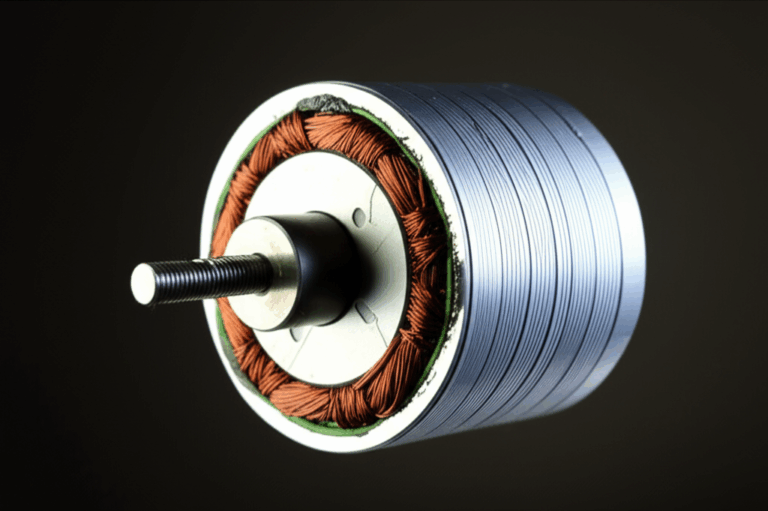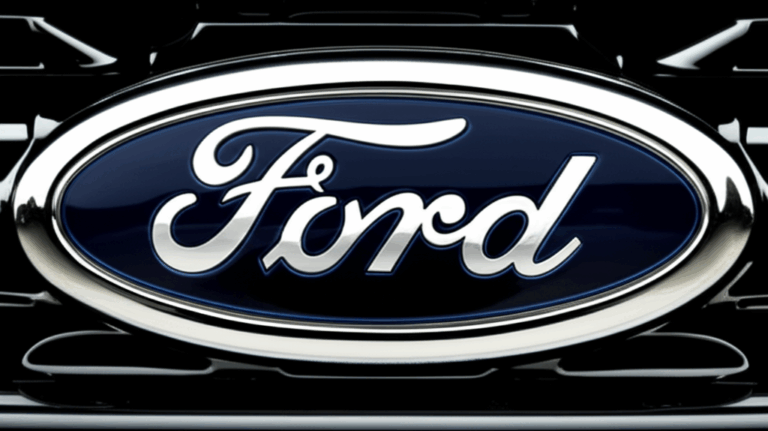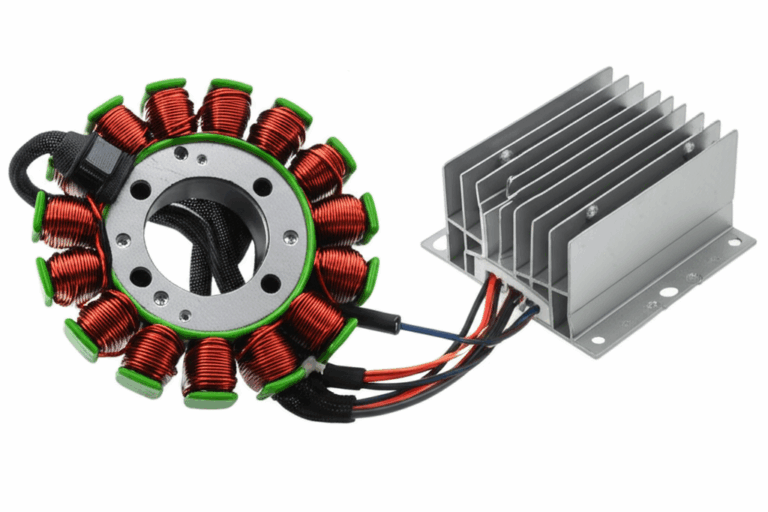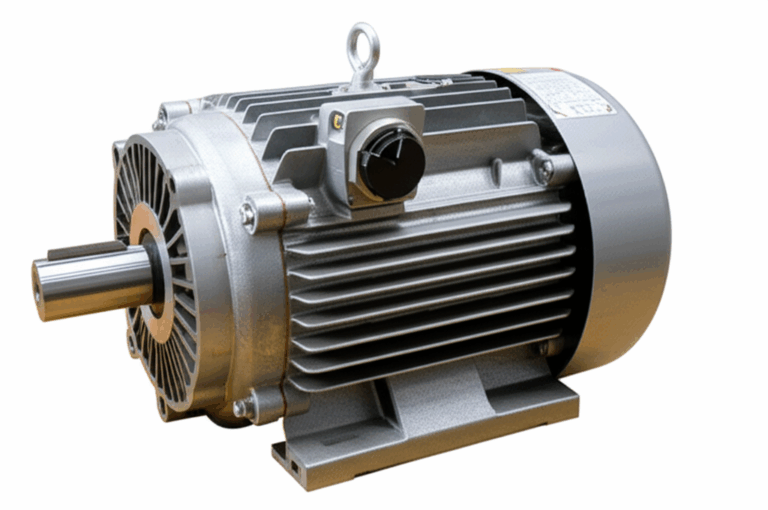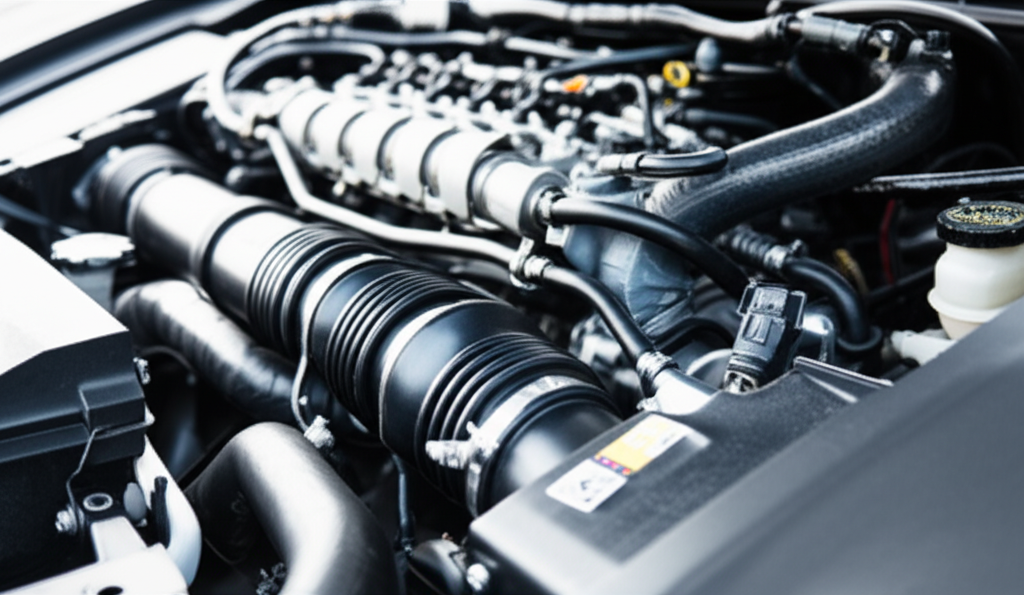
Diesel in a Gas Engine? What Happens & What to Do Immediately
Table of Contents
- The Core Problem: Why Diesel Is Detrimental to a Gasoline Engine
- Fundamental Differences Between Diesel and Gasoline
- Immediate Reactions in Your Engine
- Specific Engine Components Affected by Diesel Contamination
- Fuel System Damage
- Combustion Chamber and Engine Damage
- Exhaust System and Emissions Control
- What to Do Immediately After Misfueling (Crucial Steps!)
- Do NOT Start the Engine (or Turn It Off Instantly)
- Isolate the Problem and Secure Your Vehicle
- Professional Intervention Is Key
- The Repair Process: What to Expect and Estimated Costs
- Fuel Drain and System Flush
- Component Inspection and Replacement
- Factors That Influence Repair Costs
- Real-World Scenarios and Cost Ranges
- Prevention: How to Avoid Misfueling Accidents
- Pay Attention at the Pump
- Vehicle-Specific Reminders
- Minimizing Distractions
- Quick note for hybrids and EVs
- When to Call Your Insurance Provider
- Conclusion: Don’t Panic, Act Fast
I’ve seen this problem more times than I’d like to admit, both as a driver and as the person friends call when something goes wrong at the pump. Putting diesel in a gas motor feels like dropping the wrong batteries into a remote. The shape almost fits. The details don’t. And your engine pays the price if you try to make it work.
Let me walk you through what I’ve learned from real misfueling cases, what happens inside your gasoline engine, what to do right now, how much it might cost, and how to avoid it next time. I’ll keep it simple. I’ll keep it honest. Most of all, I’ll help you protect your engine.
The Core Problem: Why Diesel Is Detrimental to a Gasoline Engine
Fundamental Differences Between Diesel and Gasoline
When I explain this to folks at the roadside, I start with the basics. Diesel and gasoline don’t just smell different. They behave differently inside an engine.
- Octane vs. Cetane rating: Gasoline engines rely on spark ignition. That’s why gasoline gets rated by octane. Higher octane resists knock so the spark can control combustion. Diesel works the opposite way. Diesel engines compress air until it’s hot, then inject fuel that ignites from compression. Diesel gets rated by cetane which measures how readily it ignites under compression. Put diesel in a gasoline engine and you disrupt spark timing and the entire combustion process.
- Viscosity and lubrication: Diesel is thicker and oilier than gasoline. That extra viscosity makes it harder to atomize through gasoline injectors. It also clogs the fuel filter faster. In a gasoline system the wrong viscosity stresses the fuel pump and can overheat components because they can’t move fuel properly.
- Combustion process: Gasoline wants a spark. Diesel wants heat from compression. Your gasoline engine can’t create diesel-style compression ignition so diesel droplets don’t burn cleanly. They smolder. That leads to misfires, soot, and poor combustion.
Those three differences explain almost every symptom and repair I’ve seen after misfueling.
Immediate Reactions in Your Engine
Here’s what usually happens, based on what I’ve watched in the real world:
- The car won’t start at all. That’s the best outcome if you caught it early. Diesel reached the fuel rail, the engine tried, then gave up. Good. Don’t keep cranking.
- It starts and stalls quickly. The wrong fuel reached the cylinders. The engine sputters, then dies. You may smell raw fuel from the exhaust.
- Rough idle and sputtering. It may idle like it swallowed rocks. It shakes. It hesitates when you touch the throttle.
- Black smoke from the exhaust. Diesel burns poorly in a spark-ignition engine. Unburnt hydrocarbons and soot head straight for the catalytic converter.
- Engine knocking or misfiring. You’ll feel it stumble under load. The ECU may throw error codes, and the dashboard warning lights can light up like a Christmas tree.
- Significant loss of power. The car may limp or go into a protection mode if the ECU detects multiple misfires and bad oxygen sensor signals.
If you drove it, you’ll probably feel a combination of these. If you only turned the key, you might only see a crank-no-start or a start-then-die.
Specific Engine Components Affected by Diesel Contamination
The wrong fuel touches almost every part of your fuel and ignition system. I’ve seen the damage spread in a predictable path.
Fuel System Damage
- Fuel pump: Gasoline fuel pumps rely on proper flow to stay cool. Diesel’s thickness can strain the pump. It can overheat or fail if run under load with poor flow. Older or cheaper pumps hate this the most.
- Fuel injectors: Diesel is harder to atomize through gasoline injectors. It can clog pintles and leave deposits that stick even after a flush. I’ve removed injectors that looked like they’d been dipped in varnish.
- Fuel filter: It’s the first line of defense. And it clogs fast. If you started the engine, assume you’ll replace the filter.
- Fuel lines and fuel rail: Contamination travels with the fuel. Lines and the rail collect diesel residue. They need a thorough flush.
I’ve also seen issues with the fuel pressure regulator. Wrong-fuel residue can foul it. That leads to uneven fuel pressure and more misfires.
Combustion Chamber and Engine Damage
- Spark plugs: They foul quickly. Diesel coats them with carbon and oily deposits. Expect misfires and hard starts, both cold and hot.
- Pistons and cylinders: Poor combustion creates carbon buildup. If someone drove hard with diesel in the tank, I’ve seen scoring and hot spots. It’s not common in mild cases, but it happens in worst-case scenarios.
- Valves: Sticky soot can build up on intake and exhaust valves. Overheating can follow if misfires continue.
I’ve also seen engines run rich or lean as the ECU tries to adapt to nonsense fuel-air signals. That cascades into more problems if the car gets driven under load. The longer it runs the wrong fuel the higher the risk of engine breakdown.
Exhaust System and Emissions Control
- Catalytic converter: This is the big-ticket item. Unburnt diesel and soot can overload the cat. It overheats and melts down internally. Black smoke early on can turn into a clogged cat later.
- Oxygen sensors: Diesel fouls O2 sensors. Once they start reading garbage, the ECU makes poor decisions about fuel trim. Then the engine runs worse.
- EGR valve (if equipped): I’ve seen heavy soot accumulate fast. On direct injection engines, the buildup can become surprisingly stubborn.
Once the exhaust gets contaminated, repairs can snowball. The cat alone can cost thousands. That’s why the “do not start” advice isn’t scare talk. It’s the cheapest move you can make.
What to Do Immediately After Misfueling (Crucial Steps!)
I learned this the hard way helping a friend with a late-model Civic. He put diesel in, started it, and drove a mile. That one mile turned a cheap fuel drain into a multi-thousand-dollar repair. Don’t repeat that mistake.
Do NOT Start the Engine (or Turn It Off Instantly)
If you haven’t started it yet, don’t. Not even to “just move it.” If you already started it, switch it off as soon as you realize the error. That stops diesel from circulating to the fuel rail and injectors. Every second counts.
Why starting makes it worse:
- The fuel pump primes and pushes diesel through the system.
- Injectors spray the wrong fuel into the combustion chamber.
- Misfires and soot begin almost immediately.
Isolate the Problem and Secure Your Vehicle
If you already moved the car, put it in park and turn on the hazard lights. Don’t sit there revving it to “clear it out.” That will not work with diesel in a gas motor.
Do this instead:
- Call roadside assistance or a tow truck. Ask for a fuel drain specialist if your area has one.
- If you’re at a service station, inform the attendant. They’ve seen this and can help you secure the spot.
- Keep the key off. On many modern cars, the fuel pump primes when you open the driver’s door or switch to accessory mode.
Professional Intervention Is Key
I get the urge to DIY. I’ve drained tanks in my own garage. I’ve also seen DIY go sideways. Gasoline systems run high pressure and modern cars pack sensors and quick-connect fittings that don’t love improvised tools.
Why professional fuel draining beats DIY:
- They use proper extraction pumps and waste disposal.
- They can flush the fuel lines and rail after draining the tank.
- They replace the fuel filter on the spot.
- They can prime and test the system safely.
- They can run a professional diagnostic to check ECU error codes and evaluate oxygen sensor and fuel trim data.
If you added only a small amount of diesel to a full gasoline tank and you haven’t started the car, you might be tempted to dilute and drive. I don’t recommend it. The risk of fouling injectors and plugs is real. A cautious drain and flush costs less than replacing injectors or a catalytic converter.
The Repair Process: What to Expect and Estimated Costs
Once the tow drops your car at the shop, here’s how I’ve seen the process unfold.
Fuel Drain and System Flush
The tech will:
- Safely drain diesel from the gas tank.
- Dispose of contaminated fuel properly.
- Flush the fuel lines and fuel rail.
- Replace the fuel filter.
- Add fresh gasoline and prime the system.
In mild cases that’s enough. If you caught it before starting, you often get out with minimal costs and no lasting damage.
Component Inspection and Replacement
If the engine was started, assume some parts need deeper attention:
- Replace spark plugs. Diesel fouls them fast.
- Inspect or replace fuel injectors. Cleaning may work if you didn’t drive far.
- Test the fuel pump. Replace it if pressure or noise suggests damage.
- Check the catalytic converter and oxygen sensors. Replace as needed if readings or backpressure test results confirm damage.
- Scan the ECU for error codes. Clear them after repair then road-test and rescan.
I’ve also seen shops check the fuel pressure regulator and the fuel pressure sensor. Wrong-fuel residue can make them misbehave.
Factors That Influence Repair Costs
Every misfueling event is a little different. Costs vary based on:
- Amount of diesel added. A splash is different from half a tank.
- Whether you started or drove the car. Starting spreads contamination. Driving spreads damage.
- Vehicle make and model. Direct injection and turbocharged engines can be more sensitive. Luxury models often have pricier parts.
- Severity of symptoms. No start is better than rough idle with smoke. Smoke often means the cat and sensors took a hit.
- Local labor rates and parts availability. Some injectors and pumps aren’t cheap. Cat converters can be eye-watering.
Real-World Scenarios and Cost Ranges
Here’s what I’ve seen and what industry data often shows. I’m giving you ballparks so you can plan. Your local prices may vary.
- Small amount of diesel, engine not started:
- Work: Drain tank, flush lines, replace fuel filter, refill with fresh gasoline.
- Typical damage: Minimal. Components usually survive.
- Estimated cost: $200 to $500.
- Significant amount of diesel, engine not started:
- Work: Full drain, thorough flush, fuel filter replacement, inspection of pump.
- Typical damage: Usually none, but the pump gets inspected.
- Estimated cost: $300 to $800.
- Any amount of diesel, engine started but not driven:
- Work: Drain and flush, fuel filter, fresh plugs, possible injector cleaning, diagnostic scan.
- Typical damage: Pump stress, fouled plugs, potential injector clogging.
- Estimated cost: $500 to $2,500+ depending on what needed replacement.
- Any amount of diesel, engine started and driven:
- Work: Full drain and flush, plugs, likely injectors, possible fuel pump, catalytic converter evaluation or replacement, oxygen sensors, deep diagnostic and road test.
- Typical damage: Injectors and pump often take hits. Cat converter can fail. In severe cases, internal engine damage.
- Estimated cost: $2,000 to $10,000+ in worst cases. Sometimes an engine replacement makes more sense than an overhaul.
In the UK, roadside services report hundreds of thousands of misfueling incidents each year. Most involve petrol in diesel cars. Diesel in gas cars still happens, especially with older filler necks that accept larger nozzles. Professional fuel drain services tend to run a few hundred pounds before parts. The pattern is similar in the US. The big swing comes from whether you drove on the wrong fuel.
Let me share two quick stories from my own circle:
- Best-case save: A friend put a few liters of diesel into a nearly full gasoline tank. He didn’t start the car. We called a mobile fuel drain service. They emptied the tank, flushed the lines, swapped the fuel filter, and added fresh fuel. Total cost? A few hundred dollars. He drove home that night.
- Worst-case hit: Another friend filled half a tank in a gasoline Civic, then drove about five miles before the engine died. The repair list grew fast: fuel drain and flush, new injectors, new fuel pump, new spark plugs, diagnostic work, and a careful check of the catalytic converter. That bill landed around $3,800 plus towing. The cat survived but looked ugly.
Prevention: How to Avoid Misfueling Accidents
No one wakes up planning to put the wrong fuel in the tank. It happens when people rush or when a station layout is confusing. A few simple habits cut the risk almost to zero.
Pay Attention at the Pump
- Double-check the dispenser label. Slow down for ten seconds. Verify “Unleaded,” “Regular Gasoline,” or “Premium Gasoline” for gas cars. Diesel pumps often wear green or black handles, but don’t trust color alone.
- Know nozzle differences. Diesel nozzles are typically larger. Many modern gas cars won’t accept them. Older cars and some aftermarket filler necks still can.
- Read the price display and name on the screen before starting the pump. The cost-per-gallon and the fuel name act like a second check.
Vehicle-Specific Reminders
- Use your fuel cap label as a reminder. Many cars print “Unleaded Fuel Only” right on the cap or door.
- Follow manufacturer fuel recommendations. Use the right octane grade. Don’t try to “make up” for diesel contamination with an octane booster. That won’t fix the chemistry mismatch.
- If you borrow or rent cars, pause before fueling. Unfamiliar fuel doors and cap locations can lead to mix-ups.
Minimizing Distractions
- End phone calls before you fuel. Multitasking at the pump is how mistakes happen.
- Don’t rely on habit at new stations. Some stations place diesel in the center or at the end of the row. Look before you swipe.
- Recheck if you switched vehicles that day. Your brain runs on autopilot. Autopilot makes the wrong decision fast.
Quick note for hybrids and EVs
If you drive a hybrid, the gasoline engine still suffers all the same risks from diesel contamination. The electric side doesn’t care about fuel, and it uses components you’ll see in many EVs like motor cores and stators. Those parts get built from stacked laminations. If you’re curious about that side of the powertrain, here are a few resources I’ve found helpful:
- How motor manufacturers build efficient electrical steel laminations
- Why the quality of stator core laminations matters in electric motors
- An overview of modern motor core laminations
None of that changes this bottom line. Diesel in a gas motor still means stop and drain before you drive.
When to Call Your Insurance Provider
I always tell people to check their policy once they’re safe. Coverage for misfueling varies.
- Some policies classify misfueling as driver error and exclude repairs. They may still cover towing.
- Some roadside assistance plans include wrong-fuel recovery. They’ll arrange a professional fuel drain and a safe refill.
- If your catalytic converter or fuel system suffered major damage, comprehensive or mechanical breakdown coverage may help. It depends on the policy.
- Document everything. Keep receipts for fuel drain services, parts, and towing. If you drove the car, note the distance before shutdown.
- Call sooner rather than later. Ask directly if misfueling is covered, and what documentation they need.
I’ve seen people assume insurance won’t help. Sometimes it does. It never hurts to ask.
Conclusion: Don’t Panic, Act Fast
If you just put diesel in your gas tank, take a breath. You’re not the first, and you won’t be the last. The steps are simple.
- Don’t start the car. If it’s running, turn it off now.
- Call for a tow or a mobile fuel drain. Ask for a full drain and system flush.
- Replace the fuel filter. Inspect the fuel pump and injectors. Swap spark plugs if the engine ran.
- If you drove it and you saw black smoke or heavy misfiring, test the catalytic converter and oxygen sensors.
- Expect costs to vary based on how far the wrong fuel traveled. No start usually means low cost. Driving can get expensive fast.
- Learn from it. Slow down at the pump next time. Read the label. Avoid distractions.
I’ve walked people through this at gas stations, at repair shops, and over frantic phone calls. The outcome always hinges on one thing. How quickly they stop and call for help. Do that, and you’ll likely save your engine, your cat, and a big stack of cash.
Before I go, here are a few quick answers to the most common questions I hear:
- Can a gas engine run on diesel? Not in any reliable way. It will stumble, smoke, and die. Don’t try it.
- How much diesel is too much? Any amount that reaches the fuel rail is trouble. Drain the system if you added more than a splash. If you started the engine at all, drain and flush.
- Will an octane booster fix it? No. Octane and cetane solve different problems. An octane booster won’t make diesel behave like gasoline.
- What are the long-term effects if I drove on it? Expect fouled plugs, possible injector damage, and a stressed catalytic converter. Some cars recover after proper repairs. Others need deeper work.
- What should I do after repairs? Fill with top-tier gasoline. Drive gently for a few days. Then recheck for codes and monitor performance. If cold start problems or hot start problems linger, ask your mechanic to recheck fuel trims, O2 sensors, and the cat.
One last reminder. Misfueling happens. Acting fast keeps it from turning a small mistake into a big bill.

